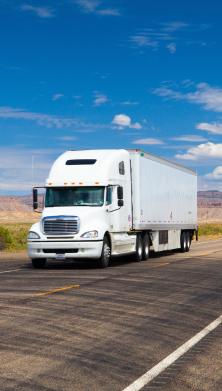
In recent years, a number of major casualties have been linked to human error, including the sinking of the El Faro in late 2015 and the grounding of the Costa Concordia in 2012. More recently, the sinking of the oil tanker Sanchi in January 2018 and the collisions of the USS Fitzgerald and the USS John S. McCain navy ships with commercial vessels in Asia during 2017, have also been linked to human behavior factors.
“Such incidents can have a common theme,” explains Captain Rahul Khanna, Global Head of Marine Risk Consulting at AGCS. “Safety rules and regulations are in place and are mostly followed, but there are some aspects of human nature that we are not addressing as an industry.”
“Understanding human behavior and how it can lead to accidents is the missing link in the shipping industry today. We need to understand how and why seafarers make decisions, especially when this deviates from protocols and training.”
Inadequate shore-side support and commercial pressures have an important role to play in maritime safety and risk exposure, Khanna believes. “These can push people to make decisions that lead to mistakes and accidents. At times, captains can be under commercial pressure to cut corners.”
Captains and crews are under increasing pressure as shipping supply chains are streamlined for greater efficiency. While vessels once spent weeks in port, turn-around times for a cargo vessel are now measured in days. And tight schedules can have a detrimental effect on safety culture and decision-making.
Captain Andrew Kinsey, Senior Marine Risk Consultant, at AGCS, describes it as the “normalization of risk” in the decision-making process. “It’s human nature. Many mariners have done it. They are under pressure, take a shortcut once that may not be the safest way to go, and get away with it. This then becomes the norm under stressed conditions.”
“There is always the need to strike the right balance between safety and commercial pressures. We all have to meet deadlines in our working lives, but commercial factors can lead to undue pressures on board. We have to make sure this is understood and addressed and look more closely at human nature – not just human error – both on board and onshore. We need to look at behavior modification and how to get crew and personnel to move away from normalizing risk.”
According to Khanna, the use of technology is vital in addressing this: “Technology can help better understand the behavior and decisionmaking process of seafarers. By analyzing data 24/7 we can gain new insights from crew behavior and near-misses that can help us to identify trends that are behind human error being the main cause of accidents.”
Operators are beginning to use Voyage Data Recorder (VDR) analytics to improve safety and risk behavior, but this has so far focused on periodic analysis of data. The industry needs to go further, Khanna believes.
“It is no longer sufficient to analyze data just once or twice a year. It should be done in ‘real time’. The industry needs to be proactive and not reactive. We have, in the past, learned from losses, but predictive analysis is important. This is possible with technology already available.”
Some operators are now starting to continually monitor bridge data recorders, looking to identify any deviation from procedures, which would raise an alarm to alert ship managers in real time. While not perfect, this gives operators far greater information on what is happening on board and the decisions being made.
“There are many good reasons why a captain may deviate from procedures in order to avoid an incident, but they may also do so to save time. There is simple information available that can help us to understand these types of behavioral issues,” says Khanna.
Analyzing complex or unstructured data like voice recorders is still some way off. However, simple data like weather, vessel speed and location can be analyzed 24/7 and compared with benchmarks. For example, ships are required to keep a minimum clearance between the keel and the sea bed, but an automatic alert can be created if this is not maintained.
“We have the data. How we make best use of it will be key,” says Khanna. “At the moment, it is down to shipowners to use data to improve safety but there is no reason why the International Maritime Organization (IMO) or other industry associations cannot take the lead and be more proactive.”
By using such technology, tragic losses could be avoided in future. “Analysis of the decisionmaking process of the captain and officers can be the difference between a safe voyage and a disaster,” says Khanna.
However, greater deployment of technology doesn’t mean becoming over-reliant, adds Chris Turberville, Head of Marine Hull & Liabilities, UK, AGCS.
“This brings its own risks. Continual training is therefore imperative to ensure the right balance is achieved between technology and human intervention.”

SOURCES
1. Allianz Global Corporate & Specialty, Safety & Shipping 1912-2012 From Titanic to Costa Concordia















